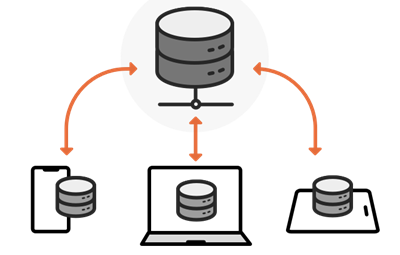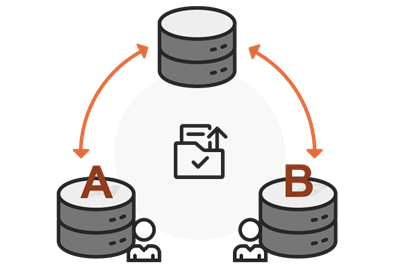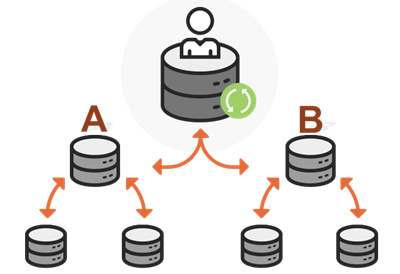Replica Management refers to the process of copying a versioned dataset into another datasource to facilitate data collection and distribution. The workflow for replica management includes the following three components:

- Preparation
Before performing replica management, we need to understand the purpose of the replica and which data version to copy from (currently, only copying from the main version is supported). For instance, if the replica is used for fieldwork but only requires checking and updating data for a specific area, we need to ensure that the dataset in the main version is the latest version. Also, all datasets that need to create the replica should be stored in a unified datasource. The range of the area should be confirmed before starting the replica creation process.
Creating a replica involves copying datasets from the main version into the udbx datasource, making it easier for field workers or contractors to edit and process data when they are unable to connect to the internal network.
Synchronizing updates means updating the edited replica data into an existing or new data version for the purpose of data collection and merging. If the data is updated into an existing version, it will default to updating the main version, and the replica data will overwrite the content in the main version. If the data is updated into a new version, a new subversion will be created. After synchronization, the current version will automatically switch to the newly created subversion. When updating the subversion data into the main version, editing conflicts may need to be handled.
Replica Management Applications
Unlike data version management, replica management can meet (but is not limited to) the following scenarios, providing you with more convenient data management.
- Field Work
To protect data security, some data is only accessible and editable within the internal network. However, field workers often need to go on-site to verify and revise data content, thus needing to edit data in an external network environment. The replica version can copy the relevant data and transfer it to the related devices, making it easier for field workers to perform their tasks. Once the operation is completed, the data can be synced back to the database when reconnected to the internal network.

- Contractor Work
Certain departments need to collect and organize large amounts of data. To speed up the work process, data is often outsourced to relevant units in modules, allowing these units to collect and update the data. Eventually, the data from various contractors needs to be merged for statistical analysis. Replica management allows for regional data replication, distributing data to different contractors, and syncing all the regional data back to the same database.

- Data Distribution and Collection by Related Departments
In data management at different levels, for example, national departments need to distribute data to provincial departments for maintenance and updating, while provincial departments further distribute the data to municipal departments for maintenance and updating. The updated data from municipal departments must eventually be merged into the national department’s database. Therefore, replica management is needed to layer and distribute the data, ultimately consolidating it back into the central database.

Related Topics



